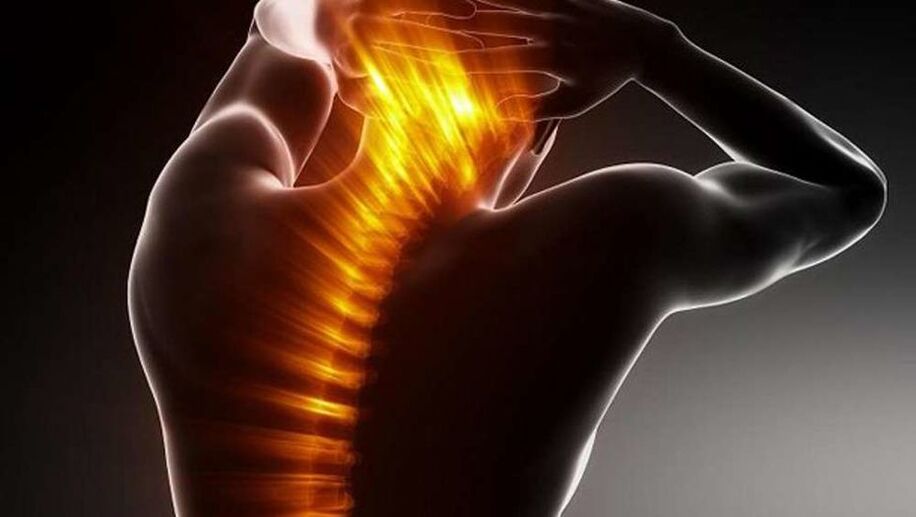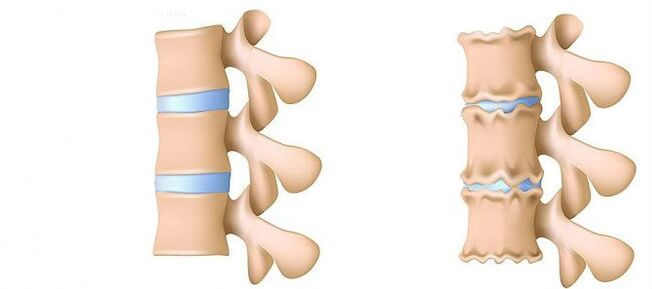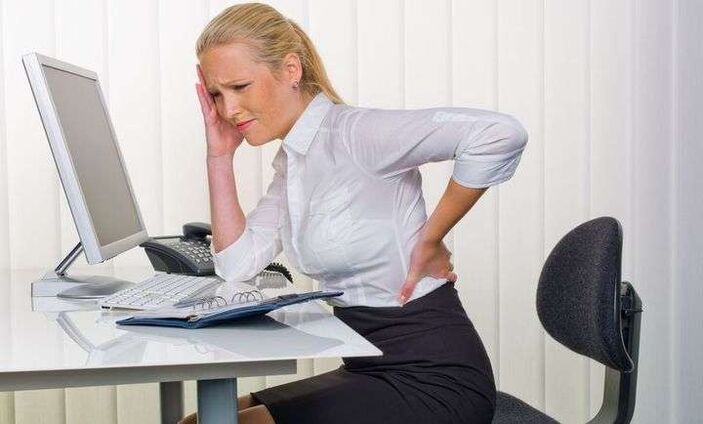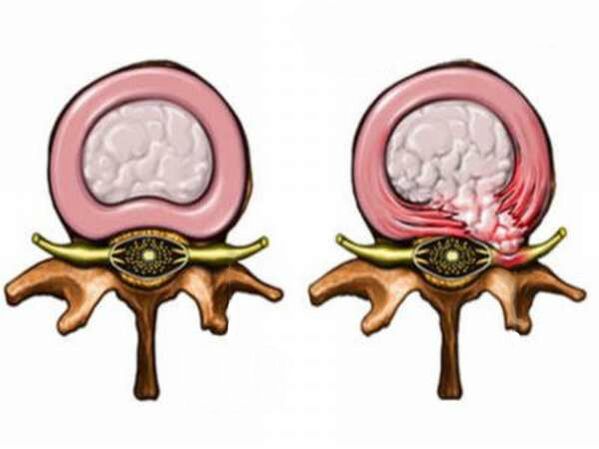Protests, hernia, osteochondrosis - when diagnosed, patients immediately rush to the surgeon without considering conservative treatments, but this is wrong.

According to statistics, 84% of people are hurting at least once in their lives.The spine and the surrounding muscles are part of the musculoskeletal system.Therefore, their damage is often accompanied by pain that can occur after slopes or turns of the head and body and weight loss at rest.The anatomically spine is represented by alternating vertebrae and intervertebral discs.The latter in time are the subject of the process of degeneration, leading to the formation of protrusions and hernias.These structures in themselves can cause pain and can cause pain by compressing adjacent structures - nerve roots and spinal ties.In some cases, they can cause stenosis (narrowing) of the spinal canal (a space in which the spinal cord is located).
Among other things, the vertebrae are connected to double veneers, the structure is firmly firmly than the intervertebral disc.Their damage in 15-65% of cases causes back pain.Up to 30% of the pain in the lower back is due to the lesion of the sacral and illegal joint structure connecting the sacrum and the bones of the pelvis.In the end, any irritation increases the tone of the muscles around, which over time causes a separate myofned syndrome.
As a rule, physical activity leads to back pain, especially in cases where it is expressed either intense or when produced in an unnatural posture or when connected to a long stay in a forced position, such as behind the wheel of a car or on a worktop.A person's weight and physical training are of great importance, since the weight of the load is always relative.
What are the reasons for its development?
It is impossible to UNEQUIVOCALY CALUSES OF THE DEELOPment of osteochondrosis, but a number of factors that contribute to the occurrence of this Disease can be Indicated: PoorMetabolism in the Body, Genetic Predisposition, Improper Posture, Prolonged Stay in One Pose (For Example, Before The Computer Monitor), Hypodynamia, and Excessively Soft Bed, Flat Feet.As a rule, these causes are combined with irrational nutrition.
What should I do if there is a back pain?
The most important rule is not to self -evaluate!
Initially, it is necessary to get acquainted with a meeting with a neurologist or neurosurgeon.In order to establish an accurate diagnosis, a comprehensive examination of the patient is required, which must include radiography of the spine and tomography (magnetic resonance or calculated X -ray. The purpose of this or this examination should only be performed by the attending physician based on a specific clinical picture.
Caring for the drug for osteochondrosis of the spine includes not only the elimination of pain syndrome, but also, if possible, eliminating root causes.The doctor prescribes complex therapy (drug therapy, physiotherapy, acupuncture, balneotherapy)
Complex therapeutic care for osteochondrosis includes a power and lifestyle correction (healthy and active lifestyle, the optimal volume of physical education), the goal, in some cases, medicines of chondroprotectors that improve cartilage tissue.
The main indication of surgical treatment of degenerative-dystrophic spinal disease is the ineffectiveness of conservative drug therapy for 4-6 weeks, unconscious pain, and for increasing weakness in the legs, which in many cases can be accompanied by urinary incontinence.Forestry and improper treatment in such situations can lead to a number of undesirable consequences and complications, to disability.
Back pain is recognized as the most common.Experts explain this to the characteristics of human anatomy.The point is that the spine is the subject of loads throughout the life of a person: from the moment he rises to his feet in his childhood until his death.The spine is worn and sooner or later the problems with it arise in almost everyone.The most common diagnoses that are made with back pain: "osteochondrosis" and "radiculitis", while often patients put them themselves and prescribe treatment themselves without seeking the advice of doctors.However, even for those diagnoses, which seems to be hearing, there are often reasons that only an experienced specialist can determine.
What hurts there?
In the vast majority (about 95%), the pain is associated with muscles, ligaments and joints.People are called to pull their backs.These pains are unpleasant, but not rich and in most cases pass independently after 2-3 days.
3-4% of the pain is associated with radiculopathy (radiculitis) - damage to the spinal root.It is usually damaged by hernia.The pain disappears when the swelling that has arisen due to compression passes.
1-2% of back pain is caused by injuries or inflammatory diseases of the spine, oncological processes, diseases of the cardiovascular system or gastrointestinal tract in which pain syndrome can enter the back.This is the most dangerous type of back pain.To rule out such pathologies, be sure to consult a doctor.
You can't slow down
The main indicator that you need medical attention is the regularity of pain.If you are twisted from time to time, there is probably nothing wrong.If low or medium intensity pain pursues you mercilessly, you cannot hesitate.It is urgent to consult a doctor if the pain is accompanied by an increase in fever or pain increases in the background of treatment.
Pain
Doctors distinguish 3 types of pain that are most often felt in the back.The doctor's task is to determine what pain the patient is concerned about the patient who has contacted him because each of them will be treated exclusively in his own way.
Nociceceptive painOr, more, the pain in the receptors - in the skin, muscles, connections, joints - is considered the most common.The reasons that cause it in the X -lies or use of computed tomography are usually not visible.In this case, the specialist diagnosed on the basis of the symptoms the patient is talking about.The causes of muscle spasm can, for example, be physical activity when a person raises something heavy, leaning or a temperature difference (a common example for example).This type of pain is treated with two types of medicines.
Acute pain is treated with painkillers from anti -inflammatory drugs and muscle relaxation drugs.In this case, there can be no other therapy.When the pain syndrome is removed, we recommend that the patient strengthens the muscles with physical education.This is the treatment and prevention of the disease for the future.
Exercise not only helps to strengthen the muscles, but also contribute to the production of endorphins, as well as serotonin and norepinephrine in the body.These substances increase the threshold of a person's pain and eliminate the depressive mood.
Neuropathic painOr nerve pain, people are more known as radiculitis.This type of pain in humans occurs, more special, when the spinal hernia becomes big and presses the nerve endings.At the same time, experts warn patients and the entire professional community against improper diagnosis in cases where the X -ray and the use of MRI are found that hernia or other type of wear of the spine is available, but it is not so important to affect the nerve.It is necessary to carefully understand the true cause of the pain.It may be guilty of muscle spasm and this type of pain is completely different and treatment will also differ for it.What is considered osteochondrosis is not only not manifested by the pain but also the norm.

Osteochondrosis is a sign of body aging.But "osteochondrosis" and "pain" are not the same.As there are virtually no nerve endings in bone tissue, convexity (the initial stage of the hernia of the intervertebral disc. - Author) or hernia cannot harm.Even studies have been conducted: NMRs have been made by groups of people - they have chosen, mainly those who have never addressed a doctor with complaints of back pain but found hernia and osteochondrosis.
In addition, the doctor gives examples when patients received treatment - and they took place, despite the fact that osteochondrosis remains in the photo.Osteochondrosis today is a concept that is used locally.
There are countries where the word "osteochondrosis" is not used at all.Last year, they officially said that this diagnosis was made by past generation neurologists.Abroad, when the patient reaches the reception and says that his back hurts, he is diagnosed with non -specific pain in his back, but it is understood that a person is loading the muscles.
Confirmation that pain is caused precisely by radiculitis, not by spasm, for specialists the symptom in the form of pain in the back of the back that give a nerve in the legs is the most common for specialists.
The cause of nerve pain can also be complications caused by diabetes and herpes.In diabetes mellitus, patients often complain of pain as this disease damages the nervous system.Family neuralgia is characterized by strips of damaged nerve rash and therefore pain.There are special medicines for the treatment of nervous pain.
Anti -epileptic and antidepressants are used to treat neuropathic pain.The name of the drugs in this orientation of patients, I have to say, often scares, so it is important for them to explain that it is antidepressants that increase the threshold of pain.These are standards for pain treatment.
Psychogenic painor chronic.This type of pain is not caused by physical changes in the human body, its mental condition changes.Symptoms torment the patient in this case for a long time.At the same time it hurts as a rule, not just the back.
It happens that people come and say everything-my head, constantly.You ask: Something heavily raised?No!And there is no clear localization.In this case, we can conclude that the patient has reduced the threshold of pain and an analyzer of pain that is in the brain is constantly felt.This can cause pain in such a patient: fatigue, stress, fear.

Anesthetic drugs in this case will not help.Specialists usually prescribe antidepressants, physical education of patients with chronic pain, but sometimes it is sufficient to find a reason to use a psychologist or psychiatrist.
A young woman who complained of back pain: six months, according to him, was tormented.I recommended that she go to a psychologist and physical education.A few days later, she became completely healthy again without taking medicine.The psychologist helped her to understand that the cause of stress pain: she has family problems, physical education helped to relax.
At homeThe most effective medicine is anti -inflammatory oral drugs.Just don't overdo it - they are only safe for the first time.With prolonged use, such drugs can cause ulcers and bleed in the gastric mucosa.Traditional home processing - non -steroidal ointments - can only be used as an additional measure.They are harmless but ineffective.Carsset also gives relief - fixing the spine, relieves spasms and limits sharp movements.Only the corset should be ordinary - elastic, not warm.
If treatment has no effect for three days, you should consult a doctor who will make the blockade with anti -inflammatory injections.Due to the removal of spasms and muscle relaxation, the pain leaves immediately and often forever.
Forbidden!
Bath and massage under the strict ban.They enhance edema and painS
Contact manual therapists in the newspaper.Manual therapy is the area where each specialist represents three hundred charlatans.If you really want to find a good doctor, you should contact certified clinics where specialists work.
It is important to correctly determine the treatment tactics immediately.This should be done by a neurologist or neurosurgeon.It is dangerous to treat yourself with your back.30% of patients from the neurosurgical department tried methods for treating the home and this was led to a hospital bed.
When the pills do not help
If drug treatment prescribes a therapist or neuropathologist does not produce results within 3-6 months and the pain continues to torment the patient, the doctor is obliged to pass on the patient to another specialist.In some situations, physiotherapy can provide significant help.It is suitable for the first two types of pain: in receptors and nerves.Physiotherapy is prescribed to those patients who are allergic to drugs or stomach problems.
Therefore, treatment goes away, but it has no effect, patients often come to us severe, with depression, so we approach their treatment multidisciplinary, with the participation of various specialists: neuropathologists, psychologists, physiotherapists, neurosurgeons.
Among the methods used by domestic physiotherapists borrowed from Russian colleaguesIntrakanic electrical stimulationSIts principle is that through a special disposable needle for disposable, bypassing the skin barrier, to deliver current directly in the focus of pain.Diagnoses in which this procedure is prescribed, including convexity and hernia.According to experts, the procedure is comfortable and does not require pain relief.The effect, as a rule, is felt after the first procedure.In total, they are appointed from 3 to 6.
It is also usedLaser therapySThis technique is also convenient as it can be prescribed to patients with various stimulants, including cardio and does not worry that failure will occur.The laser is used not only to treat diseases related to spinal problems, but also as a treatment for complications of diabetes and herpes sugar that have already been discussed.
The laser promotes good healing.In addition, the device improves the microcirculation in the spine itself and therefore the force of the discs improves.As a result, edema and inflammation are eliminated and the pain goes away accordingly.
Blockade
Such a thing as a "blockade" in medicine is not new.In severe pain, as Soviet times of patients are prescribed injections in the area where the focus of the pain is directly located.Since then, it has changed a little in the clinics areas.In the meantime, in accordance with international recommendations, these procedures must be performed exclusively under control, using special equipment that allows you to monitor the process in real time.The consequences of the unsuccessful injection can be very different: in the best case the medicine, introduced not, when necessary, will not give the necessary effect, in the least case -this is fraught with serious complications.
The administration of the drug should be performed with X -ray control: fluoroscopy, CT, MRI, ultrasound, since the drug is administered purposefully in the area where the source is pain.If the doctor receives the wrong way, it is filled with both the patient's breathing and the general anesthesia of the spine.
The essence of the blockade is that the medicine introduced from several months to six months prevents the spread of the pulse through the nerve, which is involved in the nerve pulse.Although this procedure does not guarantee a constant effect, it significantly improves the quality of life of the patient: one temporarily forgets about pain, can sleep safely or engage in his business.
Operation - Elimination of Pain
When medicines do not help - neither pills nor injections, when physiocracy is ineffective, neurosurgeons come to help.Modern technologies allow these experts to return to life without pain from patients who suffer from it for a year in a row.There are many methods: from manipulations with the most minimal intervention in the body to complex surgery with vertebrae dentures.

With hernias that have pressed the nerve, the so -called one of the most common and effective methods is recognizedRadioSIn fact, it is a type of blockage, only instead of a medicine that relieves pain only for a while, an electric current is used, which can completely solve the problem.Often ablation is done after a blockade, thanks to which doctors receive a clear understanding of which nerve it is necessary to influence.The procedure is provided on both paid basis and by quota.
The procedure is performed within 20 minutes.It's called surgery, but it's actually a surgical manipulation that is performed under local anesthesia, necessarily under the control of special devices.First, the pain syndrome is reproduced, and if the patient confirms that it is exactly the pain he usually experiences, we give pulse release - and the pain, so to speak, is excluded.
In special cases, methods are usedNeurostimulationAmong them is the implementation of the electrode.The patient is performed: the surgeon puts a small device in the focus of pain, which will suppress the impulses of pain in real time.Patients receive this procedure through a quota.
There are times when they have already done different types of surgical interventions, but the pain syndrome is preserved to one degree or another, then we put a stimulant - first in a test mode and if the desired effect is achieved, then we put it forever.This is an operation that is performed with a small incision.The only thing is that the patient will have to come periodically to control the test.
What are we risk
The risk of surgery that has been delayed or denied at all, many patients consider it very exaggerated.There are technologies in neurosurgery that allow you to accurately calculate the effectiveness of the surgery and what symptoms will disappear after it and which will remain.
The likelihood of pain after surgery does not exceed 1-1.5%.Herbs elsewhere can really occur, but this is not a complication, but the spread of the disease, which is common in young undisciplined patients.As soon as the pain leaves, they return to the usual lifestyle: they drive behind the wheel, resume training.And this is definitely impossible to do.
Has osteochondrosis blame for everything?
Osteochondrosis is a chronic degenerative dystrophic change in the intervertebral space.All people over 25 have signs of osteochondrosis.It is impossible to avoid osteochondrosis, but you can protect yourself from its complications that cause back pain.
Why is that, not otherwise?
Do I have to spend time, effort and money to treat: tablets, injections, physiotherapy, if you can immediately have a small surgery and get rid of pain once and for all?- Patients are asking this question increasingly.The answer is usually unambiguous: yes, you need it!The thing is, with accurate diagnosis and proper treatment, units reach surgery.The rest get rid of the pain in the first stages of help - an average of 30% of patients at each stage are removed.
A mistake when people who have seen a bulge or hernia in the photo immediately ran to the surgeon, bypassing the specialists from the previous stages of help.In cases where the changes are insignificant, the operation is not required.In addition, with the right lifestyle - engaged in exercises for physiotherapy, swimming, monitoring the weight of his body - a person with the so -called osteochondrosis can feel healthy and not experience pain.
It is important at each stage that the patient has an accurate diagnosis and to prescribe proper treatment.This can only be achieved collegial.It is also offered the example of a foreign experience to introduce a new specialization as an algologist, is a type of therapist specializing in pain, a doctor who has knowledge of a neurologist and anesthesic interventionist capable of treating without surgery, but if surgery still inevitably transmits to neurosios.



































